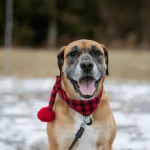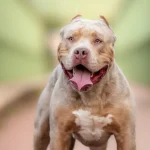What is Brachycephalic Obstructive Airway Syndrome?
Brachycephalic Obstructive Airway Syndrome (BOAS) is a condition that primarily affects flat-faced, short-nosed breeds of dogs (Brachycephalics) such as the English Bulldog, French Bulldog, Boston Terrier, Pug, Pekingese, Shih Tzu, Boxer, and occasionally other breeds.
The syndrome is prevalent in these breeds due to a shortened skull and muzzle which restricts air flow through their nasal passages. Dogs with BOAS are likely to suffer from disrupted sleep, the inability to exercise, play or eat normally. The extra effort needed to breath can also cause significant inflammation of the upper airway.
What causes BOAS?
Signs of upper airway obstruction arise from one or a combination of the following conditions:
● Narrow nostrils
● Long soft palate
● Underdeveloped, narrowed trachea (primarily in the English bulldog)
● Excessive soft tissue within the throat area
● Enlarged and inflamed tonsils
How can I tell if my dog suffers from BOAS?
● Snoring
● Shortness of breath/panting
● Difficulty in exercising
● Difficulty sleeping
● A blue/purple colour to the tongue
● Heat stroke
● Collapsing
How is BOAS diagnosed?
The signs you observe at home can help us diagnose the syndrome. Further diagnostic testing may be required following an initial physical examination with one of our Vets.
How is BOAS treated?
Depending on the pet, treatment options range from day-to-day management advice (such as weight loss and exercise restriction) to surgery. Most dogs that receive prompt treatment can experience a significant improvement in breathing and exercise tolerance.
Shortening of the soft palate, widening of the nasal openings, and correction of secondary changes in the laryngeal area are done ideally while the animal is young (6-18 months of age) to ensure a better outcome and to prevent any catastrophic respiratory events.
Emergency therapy may be necessary in a severely compromised animal. In these cases, sedation, oxygen therapy, lowering of the body temperature (if the animal is overheated) may all be needed, as well as a temporary surgical procedure until corrective surgery can be done.
Steroids may be given prior to surgery to prevent excessive swelling of the tissues in the throat after surgery.
What happens after BOAS surgery?
After surgery all pets will be monitored closely. Gagging and coughing are common after surgery and may last for several days. Food is generally withheld for at least 18 hours. Aspiration pneumonia is a serious problem that can occur, and x-rays may be recommended to monitor for this condition.
Rest assured, your pet will be in safe hands with us throughout the whole process.




